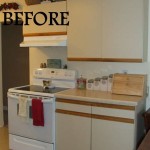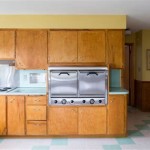Painting Your Kitchen Cabinets: A Comprehensive Guide to Professional Results
Revitalizing your kitchen cabinets with a fresh coat of paint can transform your space from tired to trendy. While it may seem like a daunting task, achieving a professional-looking finish is possible with the right kit and preparation. This guide will provide you with comprehensive insights into the essential aspects of a Paint Your Kitchen Cabinets Kit, empowering you to tackle this project with confidence.
Choosing the Right Kit
Selecting the right Paint Your Kitchen Cabinets Kit is crucial for ensuring your project's success. Consider these key factors:
- Paint: Opt for a durable, high-quality paint specifically designed for cabinets.
- Primer: A good primer creates a strong bond between the cabinet surface and paint, enhancing adhesion and coverage.
- Brushes and rollers: High-quality brushes and rollers minimize brushstrokes and ensure an even application.
- Hardware: Replace old hardware with new handles and pulls to complete the transformation.
- Supplies: Essential supplies include cleaning supplies, gloves, drop cloths, and sandpaper.
Preparation Before Painting
Proper preparation is essential for long-lasting paint results. Here's what you need to do:
- Clean cabinets deeply: Remove grease and dirt using a degreaser or TSP cleaner.
- Sand surfaces: Lightly sand the cabinet surfaces to create a smooth base for the paint.
- Repair imperfections: Fill in any holes or dents with wood filler and allow it to dry completely.
- Mask hardware: Protect hardware with painter's tape or remove it entirely if possible.
- Cover floors and countertops: Protect your surfaces from paint spills with drop cloths and painter's tape.
Applying the Paint
Follow these guidelines for a professional paint finish:
- Start with primer: Apply a thin, even coat of primer and allow it to dry completely.
- Paint cabinets: Use high-quality paint and apply in thin, even strokes with a brush or roller.
- Multiple coats may be necessary: Allow each coat to dry completely before applying the next.
- Sand between coats: Lightly sand between coats to ensure a smooth finish.
- Allow ample drying time: Allow the final coat to dry for at least 24 hours before reattaching hardware or using cabinets.
Tips for Success
* Use a paint sprayer for a smoother and faster application. * Clean brushes and rollers thoroughly between coats to prevent paint buildup. * Allow sufficient drying time between coats to prevent smudging and peeling. * Test the paint color on a small area before painting the entire cabinet to avoid surprises. * Wear gloves and work in a well-ventilated area to protect yourself from fumes.Conclusion
Painting your kitchen cabinets with a Paint Your Kitchen Cabinets Kit is a rewarding project that can transform your space. By choosing the right kit, preparing the surfaces thoroughly, and following the application guidelines, you can achieve a professional-looking finish that will enhance your kitchen for years to come.

How To Paint Kitchen Cabinets In 7 Simple Steps

Helmi Kitchen Cabinets Painting Kit Tikkurila

Budget Kitchen Renovation With Diy Shaker Painted Cabinets I

How To Paint Kitchen Cabinets In 7 Simple Steps

Step By How To Paint Your Kitchen Cabinets

How To Paint Kitchen Cabinets Best Color Ideas Cost
:max_bytes(150000):strip_icc()/DearLillieCabinets-5c64643b46e0fb0001f090ca.jpg?strip=all)
30 Painted Kitchen Cabinet Ideas

Budget Kitchen Renovation With Diy Shaker Painted Cabinets I

Painting Kitchen Cabinets

Should I Paint My Kitchen Cabinets Lily Ann








